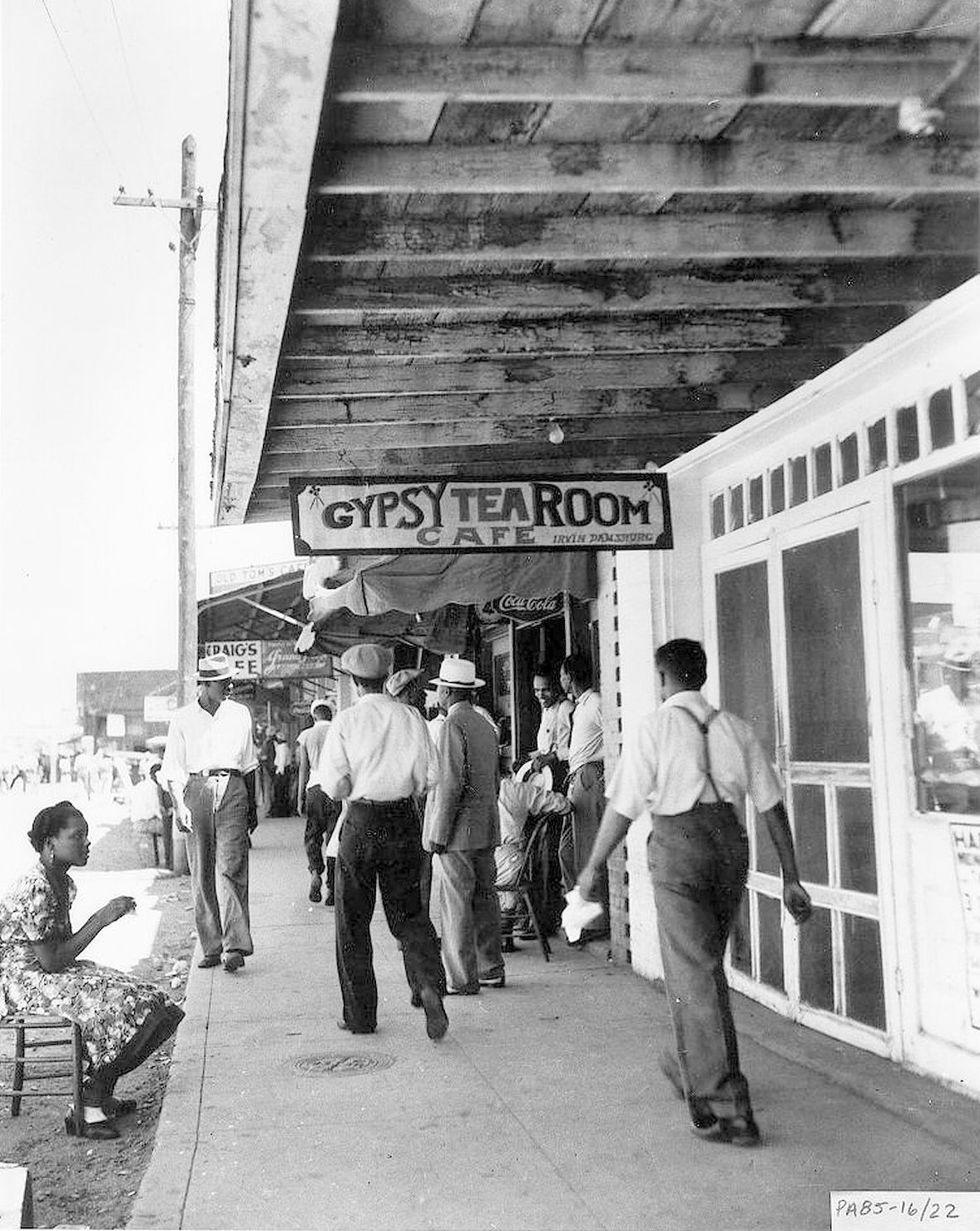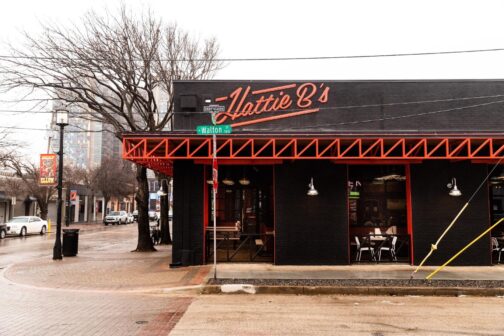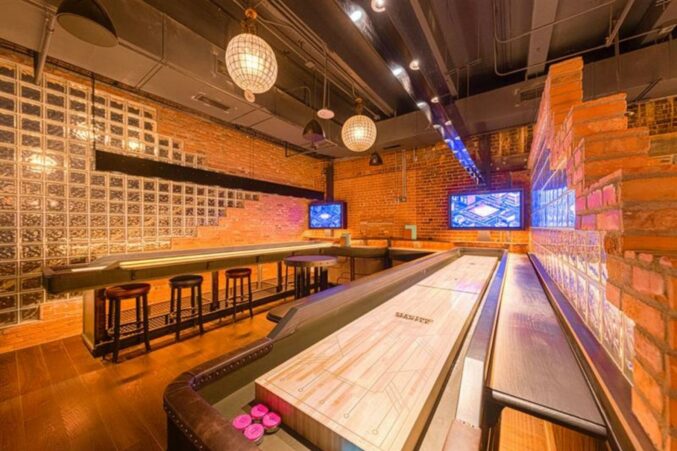No one really knows when Deep Ellum was formally established. “There wasn’t a day that somebody stuck a flag in the ground and said, ‘I hereby say this is Deep Ellum,’” says Stephanie Hudiburg, the executive director of the Deep Ellum Foundation.
But we do know when the Texas & Pacific Railroad crossed the Houston & Texas Central Railroad: early 1873, 150 years ago. Because of the neighborhood’s proximity to the railroad and the local cotton industry, the area quickly became an industrial hub of warehouses, buildings, and factories.
The Deep Ellum Foundation has begun celebrating those 150 years, when the neighborhood was born of the commercial boom.
“To hit this important milestone from one of Dallas’ most important historic neighborhoods is really pretty exciting,” Hudiburg says. The organization has planned events throughout the year to mark the moment.
Today, there are cracks in the sidewalks leading up to Deep Ellum’s shiny paper goods stores and ice cream shops. Artists poke in and out of studios, walking past neon signs, or setting up shop in a Saturday street market. Panhandlers wait outside packed parking lots. Weekends see folks standing in long lines for barbecue or concerts happening in century-old brick buildings. The neighborhood has a bustling, small-town feel, but new skyrise developments on its outskirts hint at the big city outside.
The 2023 itinerary of festivities includes parties, festivals, lectures, and exhibits. There’s at least one thing scheduled each month. The revelry kicks off January 19th with a black-tie fete at the Pittman Hotel, which is housed in the old Knights of Pythias Temple. Events continue with panel discussions of the neighborhood’s Black history and entrepreneurship; new events like the Deep Ellum Community Arts Fair, which will replace the Deep Ellum Arts Festival; holiday lights; a storytelling summit sponsored by Deep Vellum; and more.
“It’s going to be a necessarily yearlong celebration” to honor the past 150 years, Hudiburg says.
People trickled into the area throughout the second half of the 19th century, says Alan Govenar, a folklorist and Deep Ellum historian.
Recently freed enslaved people settled in the area, says Jerry Hawkins, executive director of Dallas Truth, Racial Healing, and Transformation. The area was also home to an influx of European immigrants. The name “Deep Ellum” comes from how locals once pronounced Elm Street.
Because of the neighborhood’s proximity to the railroad, and the local cotton industry, the area quickly became an industrial hub of warehouses, buildings, and factories. “We still see some of the vestiges of that today,” Hudiburg says. The Continental Gin building was built in the 1880s, and the Adam Hats Lofts once held a Ford Model T plant and showroom.
The commercial side of the district came up quickly. Black residents in the neighborhood and nearby String Town along the Central Track and Short North Dallas (now State Thomas) set up businesses, clubs, and theaters. European residents, some of whom weren’t considered “White” by the rest of the country, says Hawkins, started barbershops, pawnshops, tailor shops, and more. Rudolph’s Market and Sausage Factory, located at 2924 Elm St., opened in 1895. Merchants and businesses opened doors to anyone.
That wasn’t necessarily altruistic, though, Hudiburg says. They “were definitely led by capitalism and the ability to make money from a newly free labor group,” Hawkins says. However, this crossroads of cultures was a critical part of the district’s history and commercial and entertainment development.
Deep Ellum experienced a heyday in the 1920s. Built in 1916, the Knights of Pythias Temple was a thriving center of life for the African American community. “That’s my favorite building in Dallas,” Hawkins says. Designed by famed Black architect William Sidney Pittman, the building was paid for by the Black community and served the Black community. The building held offices for Black professionals and hosted many events, conventions, and balls throughout the next two decades. Now a hotel, it’s one of the most important Black buildings in Dallas, Hawkins says.
“It still serves as a reminder that even through the worst of Jim Crow, the Black community in Dallas created something that pushed the community forward,” he says.
While the Pythias Temple hosted events, Deep Ellum was blossoming as a jazz and blues hub.
“I think that has contributed to kind of the integration of the community more than anything, because music has always connected people,” Hawkins says. The railroads and surrounding businesses drew many rising stars to the area. Think Robert Johnson and Huddie “Leadbelly” Ledbetter. Blind Lemon Jefferson busked at the corner of Elm Street and Central Avenue, near Central Track. Dallas became an incubator, says Govenar, a place for musicians to be discovered. Clubs, vaudevilles, and performing halls, like the Harlem Theatre and Ella B Moore’s Park Theater, sprouted all over its streets. Some contemporary papers referred to the area as the “Harlem of the South,” Hawkins says.
Although Deep Ellum’s rich musical history is at the district’s roots, Deep Ellum began to decline by the end of the 1940s. Central Expressway, which was constructed from 1947 to 1956, displaced hundreds of Black residents in Deep Ellum, Short North Dallas, String Town, and Bonton. Businesses in the area shuttered. The highway, says Hawkins, “destroyed things like the Harlem Theatre and spaces like that.” Interstate 345 opened to traffic in 1973—resulting in further displacement of small businesses.
By the 1980s, artists taking advantage of cheap rents began to move in. Graffiti artists, muralists, and galleries helped spur a sort of visual art renaissance over the next 30 years. These included people like Frank Campagna, who now runs Kettle Art Gallery and is known as the “godfather of Deep Ellum.” Music and entertainment came back, too.
The economic turmoil of the Great Recession during the 2000s once again shook the neighborhood. Over the past decade, residential development has exploded throughout the district. Led by large developers like Westdale, Deep Ellum is now home to office space and residences. Both have doubled since 2020, according to the foundation. That development has come with its own set of controversies, including the fight for preservation, the paving over of history, and noise.
However, the rise of mixed-use spaces and residential development just proves the district’s history and resiliency, Hudiburg says.
That is the history the Deep Ellum Foundation seeks to highlight tthroughout the year. The 150th celebrations’ cornerstone is the new Deep Ellum Community Cultural Center. Funded by a Texas Commission on the Arts grant, the center will house local nonprofits, including the Deep Ellum Foundation and the Deep Ellum Community Association.
The center will feature a permanent history exhibit curated by Govenar, which will include a music listening room. Additionally, they’re building a recording studio—called Deep Analog Records—where visitors can make a “78” record on equipment from the period, Govenar says. The exhibit will be the “jewel and crown of that center,” Hudiberg says. Govenar is also curating a temporary exhibit on Blind Lemon, an outdoor public art installation, and several exhibitions with the African American Museum.
The goal of everything this year, says Hudiburg, is to showcase the district’s richness over the years. “Deep Ellum continues to be a cultural powerhouse. And so, we’re inviting people to rediscover it.”
Author








